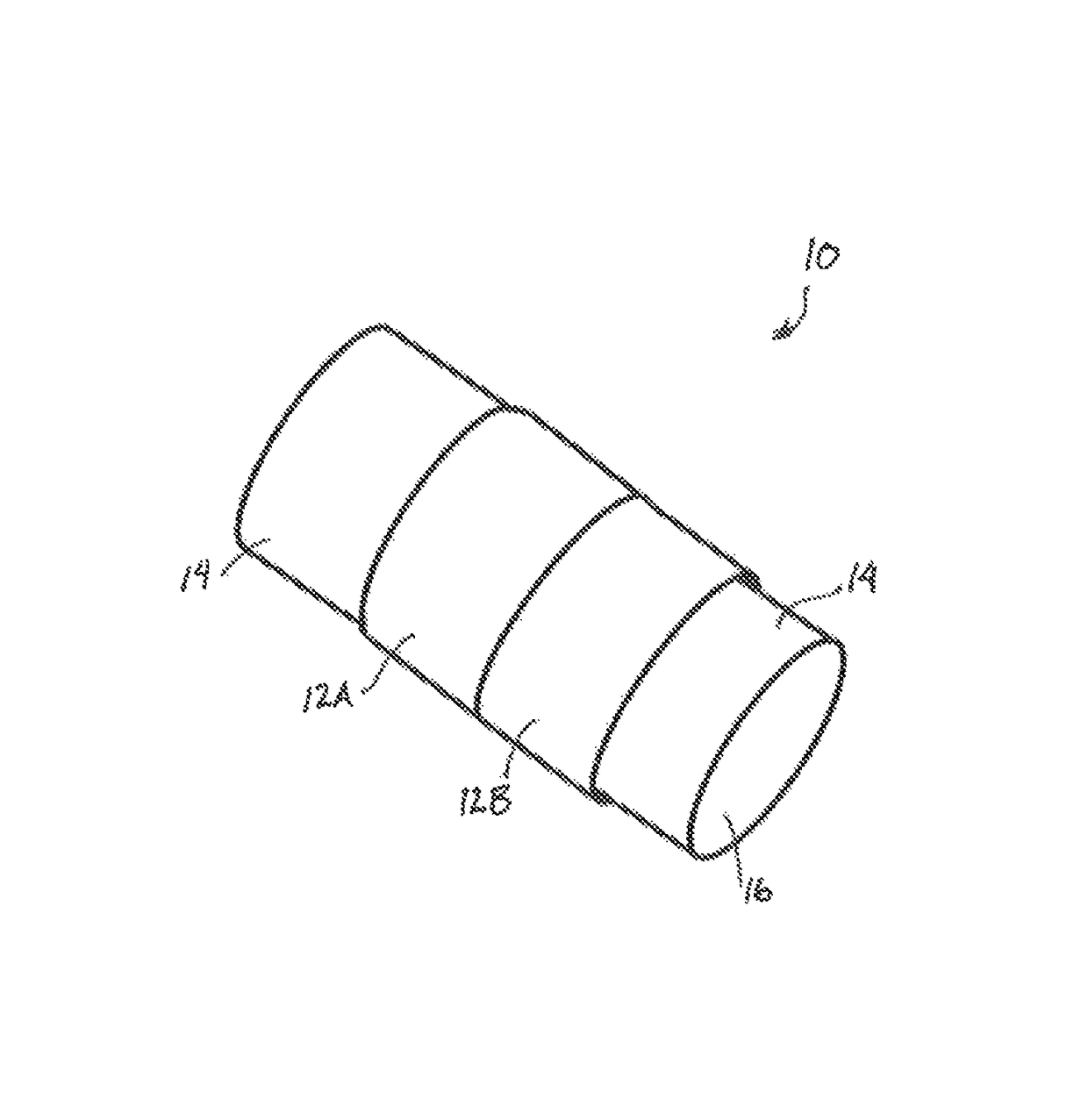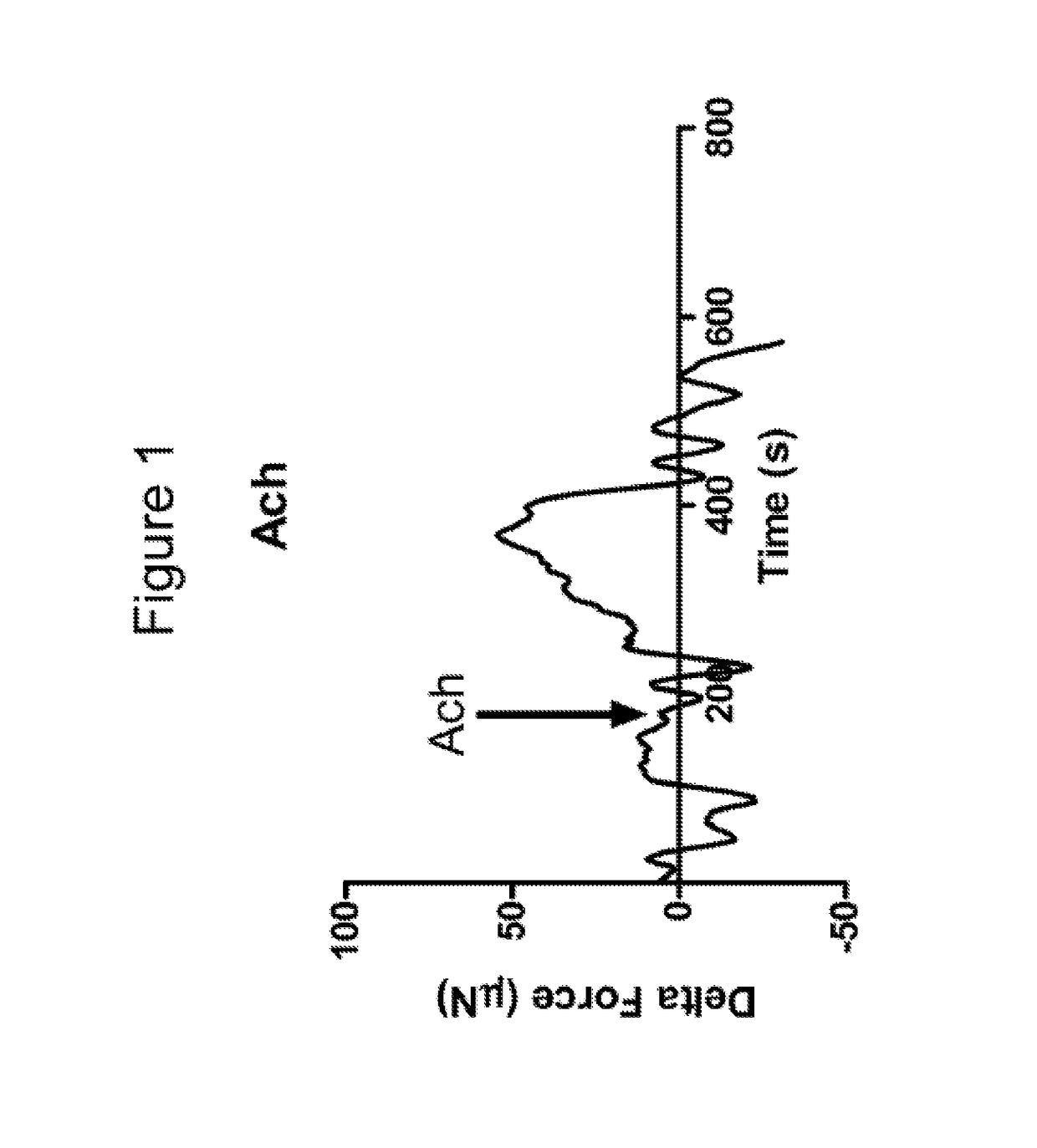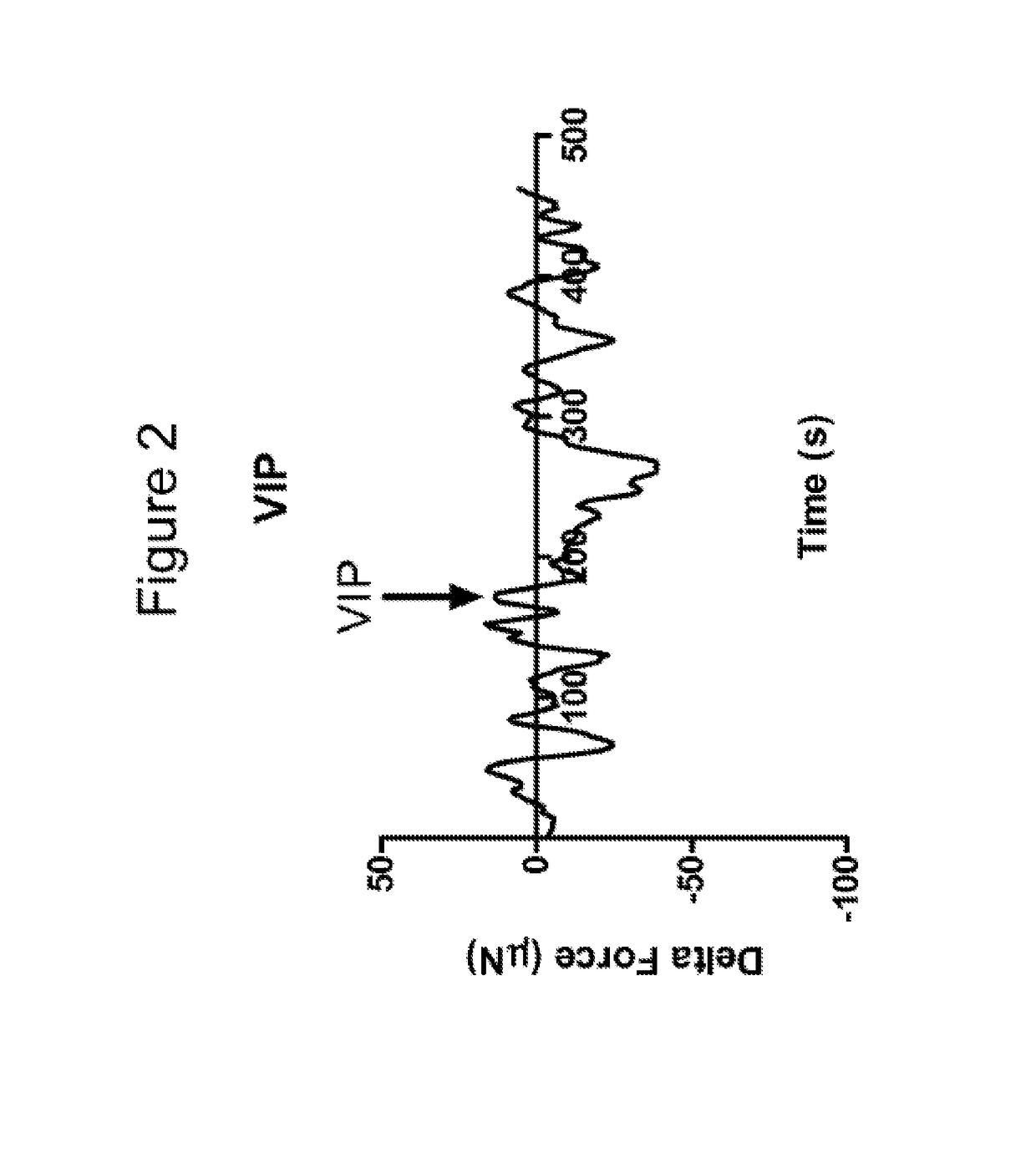Tubular bioengineered smooth muscle structures
a technology of smooth muscle and tubular structure, which is applied in the direction of skeletal/connective tissue cells, ligaments, prostheses, etc., can solve the problems of inability to generate any propulsive force, risk of blockage, and inability to adapt to artery replacemen
- Summary
- Abstract
- Description
- Claims
- Application Information
AI Technical Summary
Problems solved by technology
Method used
Image
Examples
example 1
[0082]As shown schematically in FIG. 3, Several circumferentially-oriented circular smooth muscle cell constructs 12A, 12B were bioengineered using a fibrin-based model with an internal diameter of 5 mm. A hollow tubular chitosan scaffold 14 was also manufactured with the following dimensions: 2.5 cm length, 7.25 mm outer diameter, 3.25 mm luminal diameter and 2 mm thickness. The constructs were placed around the scaffold in close proximity. Surgical glue was applied between the junctions of the constructs and along their circumference. The composite tubular tissue structure 10 was maintained in culture for >2 months. The integrity of the muscle tissue was tested by pipetting media through the lumen 16 and flow and leakage were monitored.
[0083]The bioengineered colon segment was 2 cm in length. The construct had a uniform tubular tissue structure similar to native colon. The new bioengineered 2 cm-long circular smooth muscle tubular tissue structure maintained its structural integri...
example 2
[0086]Tubular esophageal tissue was tissue-engineered to mimic the mechanical and physiological function of a native esophagus. Several concentrically aligned esophageal circular smooth muscle tissue constructs were bioengineered using collagen hydrogel. Three-dimensional smooth muscle tissue constructs were bioengineered. Rabbit esophageal constructs were bioengineered by laying down 5×105 rabbit esophageal circular smooth muscle cells in collagen gel on a Sylgard-coated plate with a central post.
[0087]The smooth muscle constructs were placed around a 2.5 cm long hollow chitosan tube and biodegradable surgical glue was applied between the smooth muscle constructs and along their circumference. The constructs were maintained around the scaffold in culture for 5 days.
[0088]The constructs were taken off the scaffold and tested to determine cholinergic contraction in response to Acetylcholine (Ach) and relaxation in response to vasoactive intestinal peptide (VIP).
[0089]An isometric for...
PUM
| Property | Measurement | Unit |
|---|---|---|
| internal diameter | aaaaa | aaaaa |
| thickness | aaaaa | aaaaa |
| luminal diameter | aaaaa | aaaaa |
Abstract
Description
Claims
Application Information
 Login to View More
Login to View More - R&D
- Intellectual Property
- Life Sciences
- Materials
- Tech Scout
- Unparalleled Data Quality
- Higher Quality Content
- 60% Fewer Hallucinations
Browse by: Latest US Patents, China's latest patents, Technical Efficacy Thesaurus, Application Domain, Technology Topic, Popular Technical Reports.
© 2025 PatSnap. All rights reserved.Legal|Privacy policy|Modern Slavery Act Transparency Statement|Sitemap|About US| Contact US: help@patsnap.com



